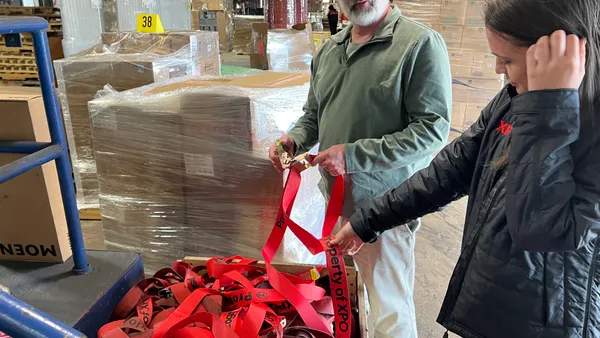Dive Brief:
- Using inclusive language in employee communications reinforces an organization’s priority on inclusion, improves the employee experience and increases the likelihood of talent retention, global HR research and advisory firm McLean & Co. suggested in its newly published Inclusive Language Guide.
- Communicating with inclusive language means avoiding “expressions that stereotype, stigmatize, trivialize, or exclude individuals or populations based on identity traits and characteristics such as race, ethnicity, gender, sexual orientation, disability, class or age,” according to the guide. Instead, employers should use intentional words that honor identities and experiences, help establish respectful learning environments, and foster welcoming interactions, the guide explained, citing research from the University of British Columbia.
- To help organizations incorporate inclusive language in their communications, the guide recommends following six principles: Acknowledge that everyone has biases; know your audience; treat individuals as experts in their own experience; ensure your approach evolves as language evolves; seek out existing resources for continuous DEI learning; and recognize change causes emotional reactions.
Dive Insight:
When people communicate, they may unintentionally use language that makes assumptions or conveys biases or judgments about people, the University of British Columbia (UBC) noted in a guidance for medical school faculty.
Consider, for example, this hypothetical medical report: “The patient typically practices unconventional treatments.”
The report could incorporate inclusive language by saying: “The patient typically practices Traditional Chinese Medicine,” using the actual term describing their cultural practice, the UBC guidance recommended. The difference is important because “labeling culturally-based practices as unacceptable or unconventional implies a negative judgment,” it said.
In another example, the guidance calls out referring to someone as “wheelchair bound.” Inclusive language would instead note that they are a “person who uses a wheelchair to assist with mobility,” it suggested.
“Disability is only one part of that person’s life, so emphasize their personhood first. Using terms like ‘bound’ imply the person is trapped, when in fact they are just using assistive technologies,” the guidance said.
Inclusive language also matters in job posts, experts have said. A bad job posting can cause employers to leave a lot of value on the table, the founder of a recruiting and job post consulting firm told attendees during a Society for Human Resource Management inclusion conference last year.
For example, a common phrase like “must be able to stand for long periods of time,” while often legal, can imply that people with physical disabilities need not apply, sources previously explained.
To ensure a job post is inclusive and doesn’t dissuade people with disabilities, recruiters can make sure the post includes additional language that the job holder must be able to perform the essential functions “with or without reasonable accommodation.”
Recruiters can also revisit what’s listed as an essential function. For a cashier’s job, instead of saying it requires the ability to stand for a long time, the post could say, “must remain at work station,” opening the door for a conversation about a mobility aid.
Another common, but potentially troublesome phrase is to require “excellent written and verbal communication skills,” an accessibility architect pointed out in an op-ed to HR Dive.
The phrase can mean something different to everyone participating in the screening process, the architect wrote. It may also discourage people with dyslexia, autism, stuttering and hearing loss from applying. Instead, consider using “effective and flexible communication skills,” the architect suggested.
One form of inclusive language — universal signage — is particularly important when working with refugees, the senior director of a nonprofit told attendees at the SHRM inclusion conference. This form of worksite communication helps ensure health and safety, especially in manufacturing environments, she said.
Employers should remember that “inclusive language is not about chasing perfection,” McLean emphasized in a May 30 press release. “It’s impossible to know all the intricacies regarding inclusive language because there is no one way to be inclusive.” Rather, it’s “highly contextual and requires adapting the approach to differing contexts and audiences over time.”













